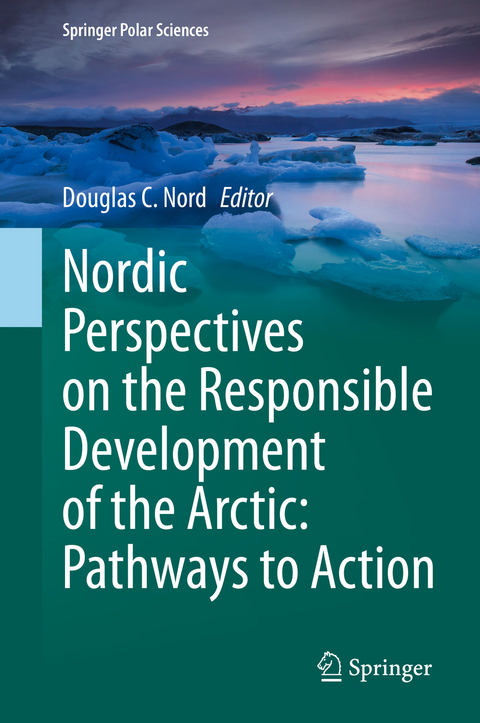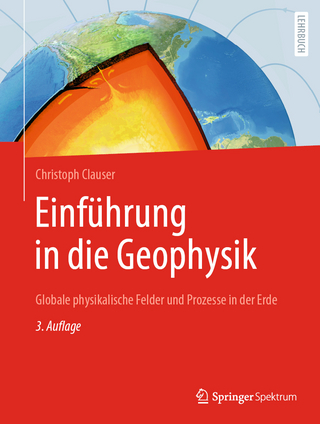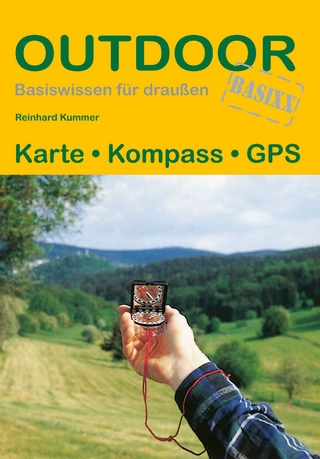
Nordic Perspectives on the Responsible Development of the Arctic: Pathways to Action
Springer International Publishing (Verlag)
978-3-030-52323-7 (ISBN)
This book investigates the multifaceted nature of change in today's Nordic Arctic and the necessary research and policy development required to address the challenges and opportunities currently faced by this region. It focuses its attention on the recent efforts of the Nordic community to create specialized Centers of Excellence in Arctic Research in order to facilitate this process of scientific inquiry and policy articulation. The volume seeks to describe both the steps that lead to this decision and the manner in which this undertaking as evolved.
The work highlights the research efforts of the four Centers and their investigations of a variety of issues including those related to ecosystem and wildlife management, the revitalization resource dependent communities, the emergence of new climate-born diseases and the development of adequate modeling techniques to assist northern communities in their efforts at adaptation and resilience building. Major discoveries and insights arising from these and other efforts are detailed and possible policy implications considered.
The book also focuses attention on the challenges of creating and supporting multidisciplinary teams of researchers to investigate such concerns and the methods and means for facilitating their collaboration and the integration of their findings to form new and useful perspectives on the nature of change in the contemporary Arctic. It also provides helpful consideration and examples of how local and indigenous communities can be engaged in the co-production of knowledge regarding the region.
The volume discusses how such research findings can be best communicated and shared between scientists, policymakers and northern residents. It considers the challenges of building common concern not just among different research disciplines but also between bureaucracies and the public. Only when this bridge-building effort is undertaken can true pathways to action be established.
Professor Douglas C. Nord is an established scholar in the fields of international relations and comparative politics. His areas of specialty include the foreign and northern development policies of Canada, the Nordic states and Russia as well as the United States. He has written extensively on the relations between the countries of the circumpolar north and on the emergence of the Arctic as a central concern of contemporary international politics. Professor Nord has taught and undertaken research inquiries at various educational institutions across the region. He presently conducts his studies at the University of Umeå in Sweden where he is an associated research professor at the Arctic Research Centre (ARCUM). He has recently published two volumes on the Arctic Council: The Changing Arctic: Creating a Framework for Consensus Building within the Arctic Council (2016) and The Arctic Council: Governance within the Far North (2016).
Chapter 1. An Introduction (Douglas C. Nord ).- Chapter 2. NordForsk as a Facilitator of Integrated Research on the Arctic (Gunnel Gustafsson).- Chapter 3. CLINF: Climate Change Effects on the Epidemiology of Infectious Diseases and the Associated Impacts on Northern Societies( Birgitta Evengård and Tomas Thierfelder ).- Chapter 4. CLINF: An Integrated Project Design(Tomas Thierfelder and Birgitta Evengård ).- Chapter 5.Environmental Data Modeling for CSI Research in the Arctic(Gia Destouni, Zarah Kalantari, Shaun Quegan, Dieder Leibovic, Juha Lemmetyinen, Jaakko Ikonen).- Chapter 6 .Reindeer Herding and Coastal Pastures: Adaption to Multiple Stressors and Cumulative Effects(Grete Hovelsrud, Camilla Risvoll, Jan Åge Riseth, Hans Tømmervik, Anna Omazic, Ann Albihn ).- Chapter 7.The ARCPATH Project-Assessing Risky Environments and Rapid Change:Research on Climate, Adaptation and Coastal Communities in the North Atlantic Region (Astrid E.J. Ogilvie, Yongqi Gao, Niels Einarsson, Noel Keenlyside, Leslie King ).- Chapter 8 .The Climate Model: An ARCPATH Tool to Understand and Predict Climate Change (Shuting Yang, Yongqi Gao, Koenigk Torben, Noel Keenlyside, Francois Counillon ).- Chapter 9. Whale Ecosystem Services and Co-production Processes Underpinning Human Wellbeing in the Arctic: Case Studies from Greenland, Iceland and Norway(Laura Malinauskaite, David Cook, Brynhildur Davi sdóttir, Helga Ögmundardóttir).- Chapter 10. "Small Science": Community Engagement and Local Research in an Era of Big Science Agendas (Catherine Chambers, Leslie King, David Cook, Laura Malinauskaite, Margaret Willson, Astrid E. J. Ogilvie, Niels Einarsson).- Chapter 11. Project ReiGN: Reindeer Husbandry in a Globalizing North-Resilience, Adaptations and Pathways to Action (Øystein Holand, Jon Moen, Jouko Kumpula, Annette Löf, Sipra Rasmus, Knut Røed ).- Chapter 12 .What Drives the Number of Semi-Domesticated Reindeer? Pasture Dynamics and Economic Incentives in Fennoscandian Reindeer Husbandry (Annti-Juhani Pekkarinen, Juoko Kumpula and Olli Tahvonen).- Chapter 13. Reindeer Herders as Stakeholders or Right- Holders: Introducing a Social-Equity Based Conceptualization Relevant for Indigenous and Local Communities (Simo Sarkki, Hannu Heikkinen and Annette Löf).- Chapter 14. Working Together: Reflections on a Transdisciplinary Effort of Co-producing Knowledge on Supplementary Feeding in Reindeer Husbandry Across Fennoscandia (Tim Horstkotte, Élise Lépy and Camilla Risvoll).- Chapter 15. Is There Such a Thing As "Best Practice"? Exploring the Extraction/Sustainability Dilemma in REXSAC ( Sverker Sörlin).- Chapter 16 .When Mines Go Silent: Exploring the Afterlives of Extraction Sites (Dag Avango and Gunhild Rosqvist).- Chapter 17 Bringing Emotions Back In-Affective Approaches to Resource Extraction(Frank Sejersted and Kirsten Thisted).- Chapter 18 .The Challenge of Synthesis: Lessons from Arctic Climate Predictions: Pathways to Resilient, Sustainable Societies (Leslie King and Astrid E.J. Ogilvie).- Chapter 19. Assessment and Evaluation in Arctic Research-Where Do We Come From, and Where Are We Going? (Andre van Amstel, Amy Lauren Lovecraft, Maureen Biermann, Roberta Marinelli and Douglas Nord).- Chapter 20 . Findings and Conclusions-Pathways for Action (Douglas Nord).
| Erscheinungsdatum | 01.11.2020 |
|---|---|
| Reihe/Serie | Springer Polar Sciences |
| Zusatzinfo | XXV, 448 p. 47 illus., 43 illus. in color. |
| Verlagsort | Cham |
| Sprache | englisch |
| Maße | 155 x 235 mm |
| Gewicht | 871 g |
| Themenwelt | Naturwissenschaften ► Geowissenschaften ► Geografie / Kartografie |
| Schlagworte | Area Studies • Circumpolar communities • climate change • Indigenous communities and residents of the Arctic • Nordic Arctic • Nordic community and Centers of Excellence • Polar and environmental research • Polar geography • Resilience building, ecosystems and wildlife manag • Resilience building, ecosystems and wildlife management • World Regional Geography |
| ISBN-10 | 3-030-52323-3 / 3030523233 |
| ISBN-13 | 978-3-030-52323-7 / 9783030523237 |
| Zustand | Neuware |
| Haben Sie eine Frage zum Produkt? |
aus dem Bereich


